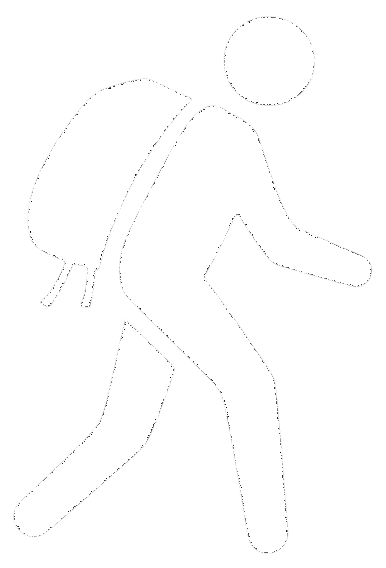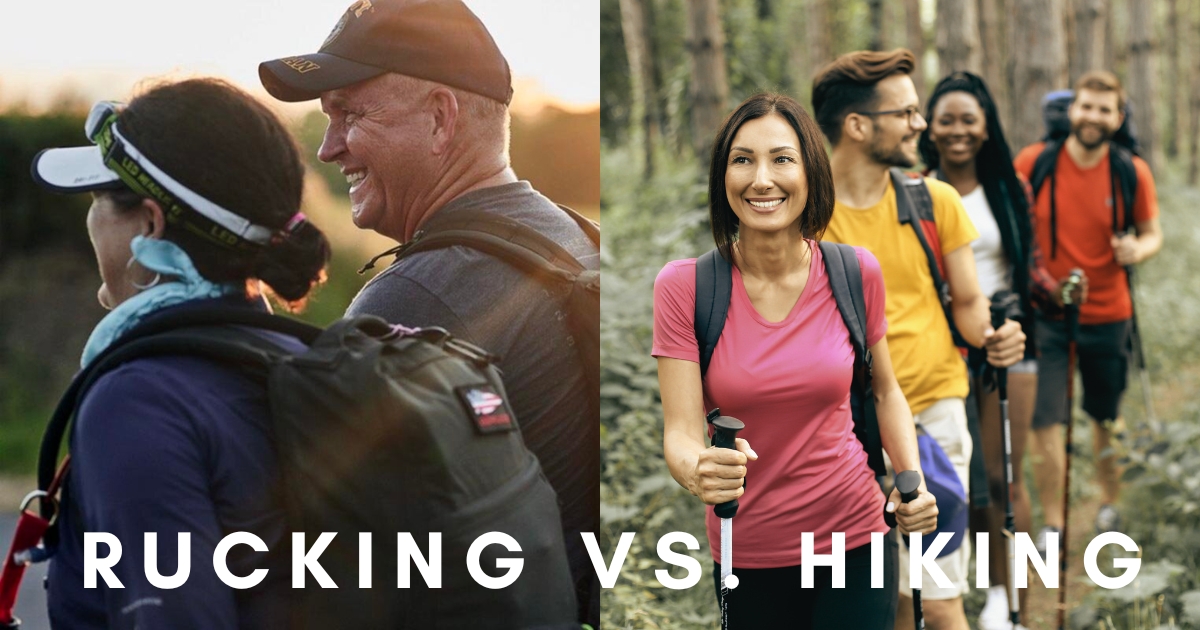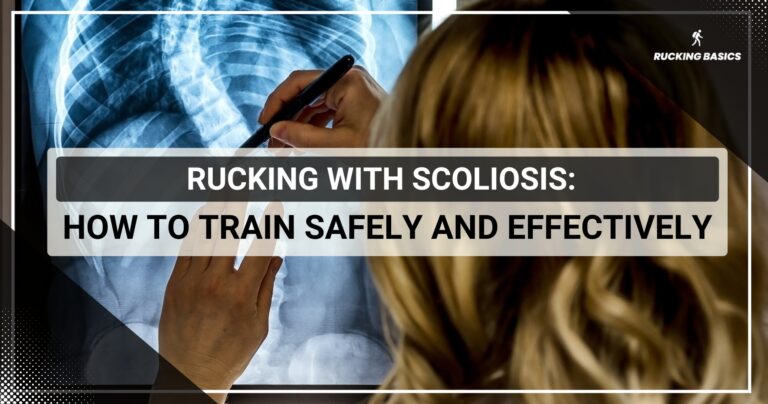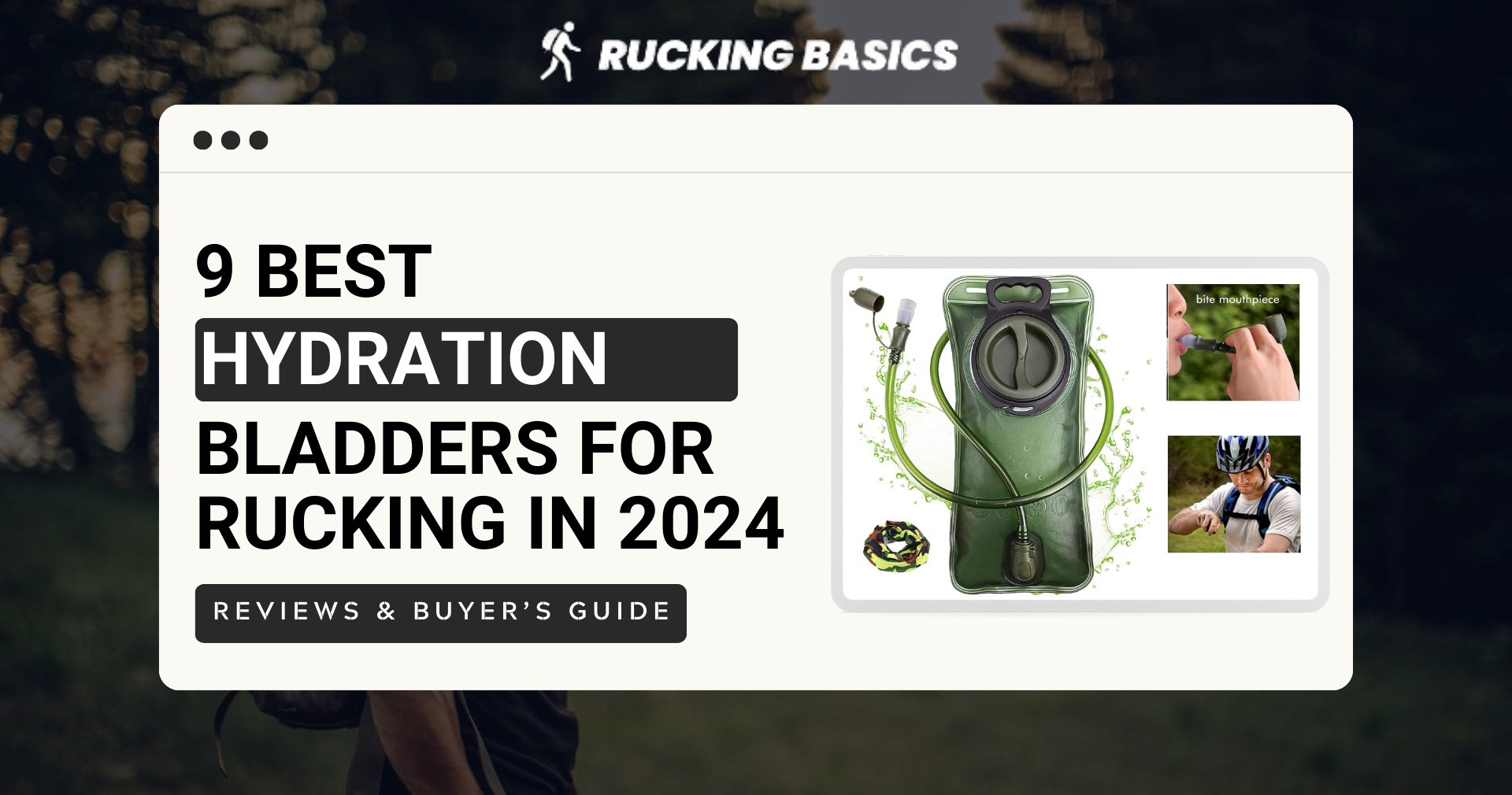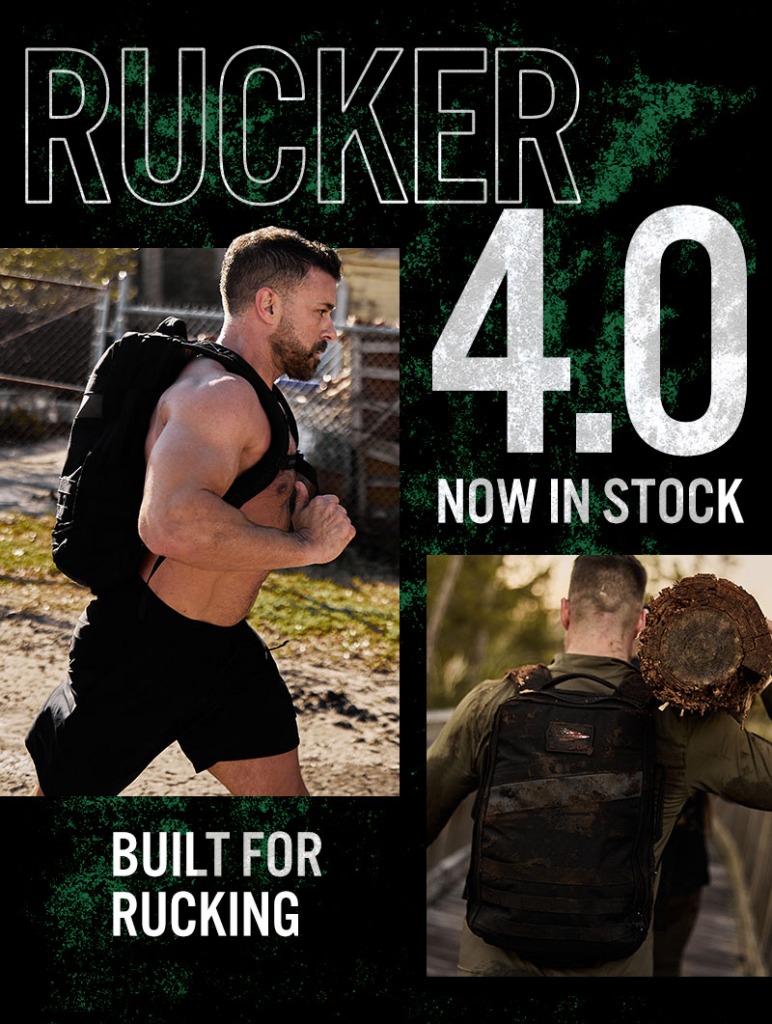When I mention rucking, most people ask, “How does rucking differ from hiking?”
This question is rather expected because hiking has been around for decades, and rucking is a newer concept, at least among the general population.
Although they share many benefits and features, no, they are not exactly the same, with trekking being the third somewhat similar discipline.
Today, my goal is to explain the main differences, pros, cons, and everything else you need to know before starting one of these two activities (or maybe both).
Understanding Rucking
Rucking originates from the rigorous training methods of the army special forces. Just remember the last war movie you saw, and I guess there was at least one scene of elite soldiers walking and running with big backpacks as part of a military training exercise.
This approach to fitness gained popularity among enthusiasts worldwide. It’s no different from the army method — trekking across various terrains while carrying a weighted backpack, except that it’s probably lighter than the one carried by a Navy SEAL.
What I especially like about ruck marching is the combination of endurance, mental toughness, and resistance training. This not only amps up the cardio intensity but also strengthens major muscle groups. And all these can speed up your weight loss.
But rucking is more than just a workout — it’s an experience. Whether you’re trekking through the city or exploring the wilderness, you get to connect with nature while getting in a good sweat.
Understanding Hiking
A renaissance of hiking started during the 1950s, and its popularity has not diminished to this day.
Whether you’re following marked trails or blazing your own path, hiking lets you escape the noise and chaos of everyday life. Unlike structured indoor exercise routines and training plans, hiking focuses more on your mental well-being, with obvious physical benefits. The sights, sounds, and smells of the nature are like therapy for the soul.
The Benefits of Both Exercises
Rucking and hiking are very physically and mentally healthy, so they share numerous benefits. Nevertheless, I decided to divide some of the distinctive benefits.
Benefits of Rucking
Main benefits of rucking include:
- Muscular Strength: Rucking workout, emphasizing weight-bearing effort, improves muscular strength. Added resistance is necessary for muscular strength, and carrying a weighted backpack stimulates strength. During this strength training, especially the legs and core benefit.
- Cardiovascular Fitness and Endurance: Regular rucking sessions with heavy loads can significantly improve cardiovascular endurance.
- Calorie Expenditure: Rucking will help you burn the most calories compared to other similar activities. The combination of sustained aerobic activity and resistance training inherent in rucking makes it a potent calorie-burning activity.
Benefits of Hiking
And now a few highlights of hiking:
- Cardiovascular Health: As numerous studies prove, hiking offers an excellent cardiovascular workout, promoting heart health. (1) (2)
- Enhanced Lower Body Musculature: The terrain encountered during hiking engages muscles throughout the lower body, including the quadriceps, hamstrings, calves, and glutes. (3)
- Mental Well-being: Immersion in natural surroundings during hiking has an excellent effect on mental health and well-being. Exposure to green spaces and natural environments reduces stress, anxiety, and depression. (4)
Are There Any Downsides of Rucking and Hiking?
Nothing is perfect, right? So, rucking and hiking also have certain downside which I am sure will not deter you from these activities. You’ll see, those downsides are pretty minor.
Rucking Cons
- Impact on Joints: The repetitive impact of carrying a heavy load places stress on ankles, knees, and hips. However, if you are properly prepared, have appropriate footwear, and carry reasonable weight in weighted vests, I’m not expecting any trouble.
- Impact on Back: The same applies to the back as for joints. The lower back is a common area of pain, so I recommend doing strengthening exercises like Superman and warming up properly.
Hiking Cons
- Weather: Hiking is subject to the whims of Mother Nature. So rain, snow, heat, and cold can prevent you from continuing this activity. That’s why proper preparation is necessary.
- Geographical Obstacles: While hiking trails are common, certain geographical features such as rugged terrain and steep inclines are unconquerable obstacles.
Gear and Safety
Another great thing is the simplicity of rucking and hiking. You don’t need fancy equipment, expensive gym memberships, or a personal trainer.
Yes, you need a bit more gear for rucking than hiking, which primarily refers to a rucking backpack, such as GoRuck Rucker, or a weighted vest. But other than that basic rucking gear, just add some weight plate (ruck plate). This accessibility makes it easy for anyone to join in, regardless of fitness level or budget. (5)
In addition, you need premium footwear and socks for both activities. Also, moisture-wicking clothing is one of the rucking accessories that I highly recommend.
Safety should not be your concern if you have the proper gear and pay attention to weather and trail characteristics.
Invest in a hydration bladder or water bottle to stay hydrated during rucking and hiking. Also, consume energy-rich snacks.
Always carry essential safety gear such as a whistle, flashlight, emergency blanket, and signaling device. Familiarize yourself with basic first aid procedures and know how to respond to common emergencies. Make sure your companions have the same knowledge.
Looking to gear up for your next rucking? Check out our buyers guides.
Choosing Between Rucking and Hiking
Hiking is more about nature and a slower pace, while rucking is focused on pushing yourself physically and getting a serious workout. That’s why my vote goes to rucking since I’m more into activities that increase my heart rate.
Depending on your fitness goals and preferences, you can choose the intensity level that suits you best; you don’t have to push yourself overboard.
Also, consider the following:
- Mood and Fitness Goals – Your current mood and fitness goals are very important.
- Terrain Preferences – Do you prefer the challenge of rugged trails and steep inclines, or do you gravitate towards scenic routes with panoramic views?
- Variety and Challenge – Embrace the opportunity to incorporate rucking and hiking into your outdoor fitness routine. Still, rucking is undoubtedly the winner if you are striving for variety and challenge.
The beauty of choosing between rucking and hiking lies in their flexibility and variety.
Conclusion
When talking to my clients, I always stress the significance of incorporating as many activities as possible into the daily routine. So try both rucking and hiking, together with gym and other daily activities. You will see how your body and mind will transform over time. If you are struggling to find a company, just use the GoRuck Clubs app and start your daily workouts with new friends.
Frequently Asked Questions
Can rucking and hiking be adapted for different fitness levels?
Yes, people of all fitness levels can try rucking and hiking. Beginners should start with shorter, less strenuous routes, gradually increasing distance and difficulty. Similarly, experienced enthusiasts can customize these activities by adjusting pace, elevation gain, and added weight.
How can you prevent blisters and foot pain while rucking or hiking?
Blisters and foot pain are among the most common problems encountered during rucking and hiking. Luckily, there are steps you can take to minimize discomfort.
Invest in appropriate footwear designed for the specific terrain and activity and moisture-wicking socks. My advice is to use moleskin or athletic tape on areas prone to rubbing or irritation. Additionally, take regular breaks to rest and dry your feet.
Are there any environmental impacts to consider when engaging in rucking or hiking?
Environmental impact is usually negligible, but don’t forget to stay on designated trails, properly dispose of waste, and respect wildlife and vegetation.
Can rucking and hiking be done in urban environments?
Rucking and hiking are often associated with natural landscapes, but you can also try them in urban environments. There is no doubt nature is best for these two activities. However, many cities offer parks, green spaces, and urban trails that provide opportunities for rucking and hiking. Urban rucking and hiking help you stay active and connected with nature, even in metropolitan settings.
What are the benefits of incorporating interval training into rucking and hiking routines?
Interval training challenges the body to adapt and improve its performance over time by alternating between high and lower-intensity periods. This approach can enhance aerobic capacity, increase calorie burn, and promote faster recovery.
Can rucking and hiking be combined with outdoor activities such as camping or photography?
Pack lightweight camping gear and plan multi-day hikes or rucks to explore remote wilderness areas and camp under the stars. Bring a camera or smartphone to capture stunning landscapes, wildlife sightings, and memorable moments along the trail.
References
- Kang SJ. Trekking exercise promotes cardiovascular health and fitness benefits in older obese women. J Exerc Rehabil. 2014 Aug 31;10(4):225-9. doi: 10.12965/jer.140110. PMID: 25210697; PMCID: PMC4157929.
- Omura JD, Ussery EN, Loustalot F, Fulton JE, Carlson SA. Walking as an Opportunity for Cardiovascular Disease Prevention. Prev Chronic Dis. 2019 May 30;16:E66. doi: 10.5888/pcd16.180690. PMID: 31146804; PMCID: PMC6549420.
- Voloshina AS, Kuo AD, Daley MA, Ferris DP. Biomechanics and energetics of walking on uneven terrain. J Exp Biol. 2013 Nov 1;216(Pt 21):3963-70. doi: 10.1242/jeb.081711. Epub 2013 Aug 2. PMID: 23913951; PMCID: PMC4236228.
- Jimenez MP, DeVille NV, Elliott EG, Schiff JE, Wilt GE, Hart JE, James P. Associations between Nature Exposure and Health: A Review of the Evidence. Int J Environ Res Public Health. 2021 Apr 30;18(9):4790. doi: 10.3390/ijerph18094790. PMID: 33946197; PMCID: PMC8125471.
- Mitten, Denise & Overholt, Jillisa & Haynes, Francis & Damore, Chiara & Ady, Janet. (2016). Hiking: A Low-Cost, Accessible Intervention to Promote Health Benefits. American Journal of Lifestyle Medicine. 12. 10.1177/1559827616658229.
